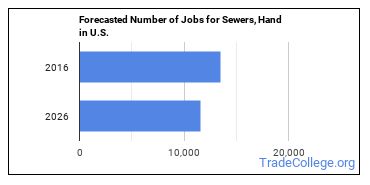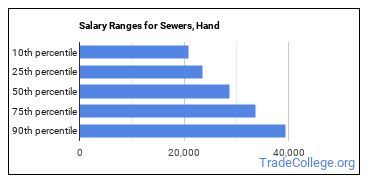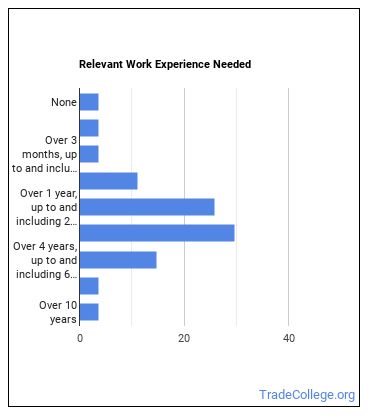Find Trade Colleges
What Does it Take to Be a Hand Sewer?
Hand Sewer Definition Sew, join, reinforce, or finish, usually with needle and thread, a variety of manufactured items. Includes weavers and stitchers.
List of Hand Sewer Job Duties
- Draw and cut patterns according to specifications.
- Select thread, twine, cord, or yarn to be used, and thread needles.
- Trim excess threads or edges of parts, using scissors or knives.
- Soften leather or shoe material with water to prepare it for sewing.
- Sew buttonholes, or add lace or other trimming.
- Fold, twist, stretch, or drape material, and secure articles in preparation for sewing.
Featured schools near , edit
What a Hand Sewer Should Know
Below is a list of the skills most Sewers, Hand say are important on the job.
Judgment and Decision Making: Considering the relative costs and benefits of potential actions to choose the most appropriate one.
Time Management: Managing one’s own time and the time of others.
Complex Problem Solving: Identifying complex problems and reviewing related information to develop and evaluate options and implement solutions.
Critical Thinking: Using logic and reasoning to identify the strengths and weaknesses of alternative solutions, conclusions or approaches to problems.
Speaking: Talking to others to convey information effectively.
Monitoring: Monitoring/Assessing performance of yourself, other individuals, or organizations to make improvements or take corrective action.
Related Job Titles for this Occupation:
- Custom Clothier
- Pelota Maker
- Hand Sole Sewer
- Hand Quilter
- Bale Sewer
Job Opportunities for Sewers, Hand
In 2016, there was an estimated number of 13,500 jobs in the United States for Hand Sewer. There is little to no growth in job opportunities for Hand Sewer. The BLS estimates 1,400 yearly job openings in this field.

The states with the most job growth for Hand Sewer are Oregon, Colorado, and Massachusetts. Watch out if you plan on working in Ohio, New York, or New Mexico. These states have the worst job growth for this type of profession.
Salary for a Hand Sewer
The typical yearly salary for Sewers, Hand is somewhere between $20,900 and $39,410.

Sewers, Hand who work in Kentucky, Oregon, or Colorado, make the highest salaries.
How much do Sewers, Hand make in different U.S. states?
| State | Annual Mean Salary |
|---|---|
| Alabama | $31,260 |
| California | $29,700 |
| Colorado | $32,810 |
| Florida | $27,720 |
| Idaho | $30,990 |
| Illinois | $28,620 |
| Indiana | $28,240 |
| Kentucky | $35,850 |
| Louisiana | $21,740 |
| Massachusetts | $30,820 |
| Missouri | $35,700 |
| New Jersey | $30,200 |
| New York | $29,310 |
| North Carolina | $26,160 |
| Ohio | $28,460 |
| Oregon | $38,060 |
| Pennsylvania | $28,370 |
| Tennessee | $29,820 |
| Texas | $32,100 |
| Utah | $23,600 |
| Virginia | $26,160 |
| Wisconsin | $31,100 |
What Tools & Technology do Sewers, Hand Use?
Below is a list of the types of tools and technologies that Sewers, Hand may use on a daily basis:
- Microsoft Excel
- Microsoft Office
- Microsoft PowerPoint
- Adobe Systems Adobe Photoshop
- Adobe Systems Adobe Illustrator
- Corel CorelDraw Graphics Suite
- Adobe Systems Adobe Freehand
- Drawing software
- Embroidery design software
Becoming a Hand Sewer
Education needed to be a Hand Sewer:

How many years of work experience do I need?

References:
More about our data sources and methodologies.
